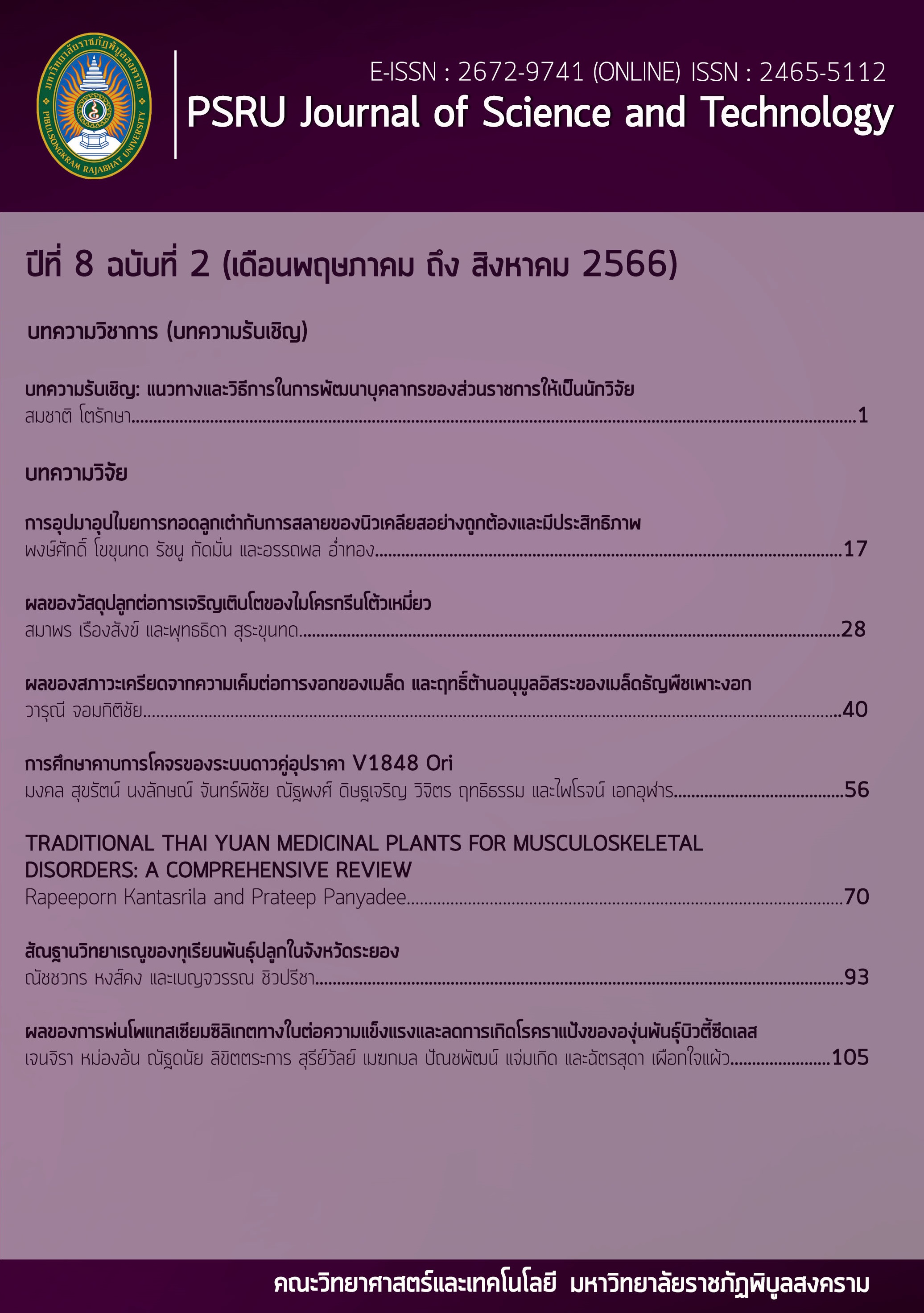AN ACCURATE AND EFFICIENT ANALOGY OF DICE-SHAKING AND RADIOACTIVE DECAY
Keywords:
Dice-shaking, Decay constant, Radioactive decayAbstract
In teaching radioactive decay labs, dice are often used as metaphors for radioactive nuclei because the equipment is cheaper and safer than real radioactive elements. However, a common problem in experiments is that the dice decay constant deviates from the theoretical value. This problem may be caused by an incorrect theory. In this research, we study the decreasing numbers of dice after rolling by using the actual dice roll method and computer modeling method to calculate the decay constants compared with some theoretical values presented by IPST and Murray & Hart to find the correct theoretical value. In addition, we also consider the appropriate number of initial dice for being used in teaching. It is found that the initial numbers of 80 dice is sufficient to obtain a reasonable trend of decreasing dice, theoretically correct decay constant presented by Murray & Hart, and short time for doing the experiments. Therefore, this study provides a correct understanding of the decrease in the number of dice and proposes an efficient number of dice for teaching the experiments of an analogy of dice-shaking and radioactive decay.
References
สถาบันส่งเสริมการสอนวิทยาศาสตร์และเทคโนโลยี (สสวท.) (2555). หนังสือเรียนรายวิชาเพิ่มเติม ฟิสิกส์ เล่ม 5. กรุงเทพฯ: องค์การค้าของ สกสค.
Jesse, K.E. (2003). Computer simulation of radioactive decay. The Physics Teacher, 41(9), 542-543.
Klein, L., & Kagan, D. (2010). “Radio‐Active” Learning: Visual Representation of Radioactive Decay Using Dice. The Physics Teacher, 48(1), 45-45.
Kowalski, L. (1981). Simulating radioactive decay with dice. The physics teacher, 19(2), 113-113.
Murray, A., & Hart, I. (2012). The ‘radioactive dice’ experiment: why is the ‘half-life’ slightly wrong?. Physics Education, 47(2), 197.
Sahu, S. (2011). Model of radioactive decay using dice. Physics Education, 46(3), 255.
Santostasi, D., Malgieri, M., Montagna, P., & Vitulo, P. (2017). An experiment on radioactive equilibrium and its modelling using the ‘radioactive dice’ approach. Physics Education, 52(4), 045023.
Schultz, E. (1997). Dice shaking as an analogy for radioactive decay and first order kinetics. Journal of
Chemical Education, 74(5), 505.
Downloads
Published
Versions
- 2024-05-29 (2)
- 2023-08-23 (1)
How to Cite
Issue
Section
License
Copyright (c) 2023 PSRU Journal of Science and Technology

This work is licensed under a Creative Commons Attribution-NonCommercial-NoDerivatives 4.0 International License.
กองบรรณาธิการขอสงวนสิทธิ์ในการปรับปรุงแก้ไขตัวอักษรและคำสะกดต่างๆ ที่ไม่ถูกต้อง และต้นฉบับที่ได้รับการตีพิมพ์ในวารสาร PSRU Journal of Science and Technology ถือเป็นกรรมสิทธิ์ของคณะวิทยาศาสตร์และเทคโนโลยี มหาวิทยาลัยราชภัฏพิบูลสงคราม และ
ผลการพิจารณาคัดเลือกบทความตีพิมพ์ในวารสารให้ถือมติของกองบรรณาธิการเป็นที่สิ้นสุด






